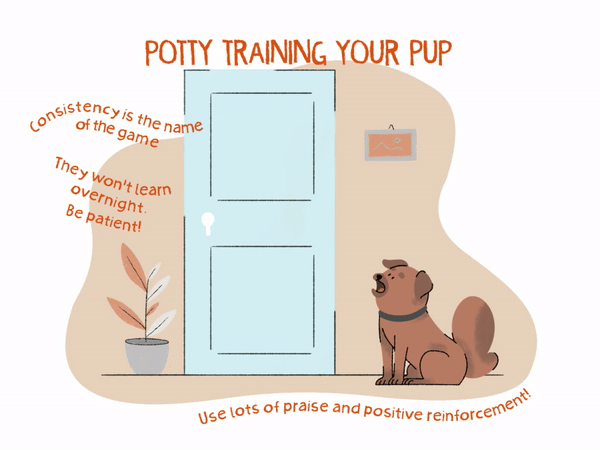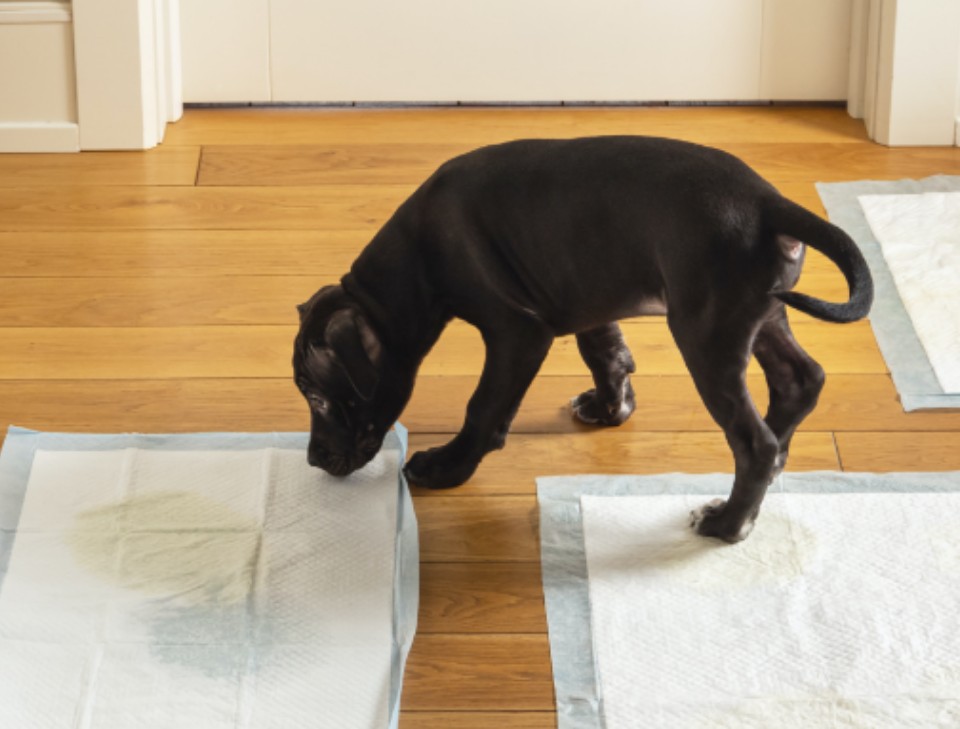how to potty train a new puppy
Getting down to business - hopefully outside
Like real estate, potty time is all about location, location, location. It’s up to you to teach the newest member of your family where it’s okay to “go.” While accidents will happen, time, patience, and consistency — plus our time-tested, puppy-approved methods — are all great tools to help housetraining become a habit.

Crate training is great for potty training
Dogs are den animals, and instinctively love a soft, safe, secure place to curl up and call their own. And once they have this space, they’ll almost never have an accident inside it. This is what makes crate training an effective housebreaking technique. Plus, once they’re comfortable in their safe haven, they’ll be far less anxious and scared when they’re crated for the vet or groomer, or on long car trips.
Choose a crate size and type that is just snug enough for your pup to be cozy, but roomy enough that they can still turn around comfortably. See more about crate training
Potty train your puppy by understanding crating times
A crate is a great training tool, but always remember that what your puppy needs most is your love, affection, and attention.
Consistent spot training can help house training
With spot training, you train your puppy to be comfortable going potty in a litter box or a potty spot that you set up in your home or outside. If your pup is a smaller breed and won’t have much access to outdoors, like in an apartment, then paper or box training may be the way to go.

Don’t punish your puppy for potty “accidents”
They’re called “accidents” for a reason! They happen, it’s OK, no need to get frustrated. Just clean them up as quickly as possible and use an enzymatic cleaner to remove odor. If you catch your pup mid-tinkle, scoop up your pup and immediately take them to the spot where they’re supposed to go. (You may even want to leave a tiny bit of poop in that spot to help your puppy understand that this is where they do their business.)
If you find a misplaced poop or pee, do not discipline your pup. They will not understand what they’re being scolded for, and it will hurt the trust you’re trying to build. If it just keeps on happening, speak to your veterinary team to rule out a health issue.
How Banfield can help
Your veterinary team may be able to recommend videos, local puppy classes, or other helpful resources. Plus, if you are having consistent issues in house-training your pup, we can definitely take a look to rule out or help resolve possible health problems.
 Mites and mange
Mites and mange Podcast - Not Just Fluff
Podcast - Not Just Fluff


